Mechanical structures, including railway rolling stock, use a large number of bolted connections, which often loose or fatigue fracture in a vibrating environment. For important components, for example, the bolts that connect the brake discs of the train and the axle box cover bolts will cause a major accident if they are loose or broken. In recent years, the use of a torque nut has prevented the loosening of the bolt caused by the rotation of the nut. However, the nut does not rotate, and if the bolt pre-tightening force is greatly reduced, the bolt will still loosen. In order to reproduce the looseness of the bolts, Lu Liantao's research group independently designed the test tool shown in Figure 1 according to the principle of using the 20T axially loaded electro-hydraulic servo fatigue testing machine in Shimadzu, Japan, and carried out the bolt under the lateral load. Loose test. Figure 2 is a plot of the pre-tightening force of the bolt measured with the cycle as measured by the test. This is an example of a high-strength bolt using a torque nut that does not rotate under vibration but has a preload. It can be seen from the figure that in the early stage of the vibration action, the pre-tightening force rapidly decreases, and thereafter, the pre-tightening force slowly decreases as the number of vibrations increases. It is found that the rapid decrease of the pre-tightening force is caused by the plastic deformation of the root of the screw; the subsequent slow decline is caused by the fretting wear of the thread surface (this is very noteworthy, I think it can be explained that the bolt is not moved, its The pre-tightening force drops rapidly). These illustrate that the looseness of the bolt is related to the microscopic damage of the threaded zone. Since the microscopic damage of the bolt is not easy to observe and monitor through real-time observation, the research team established the bolt finite element model shown in Fig. 3. Through the Abaqus subroutine UMATUMESHMOTION, the bolt loosening caused by plastic deformation and fretting wear was simulated and calculated separately. The evolution of the plastic deformation of the root of the screw and the change of the wear depth of the thread surface during the loosening process.
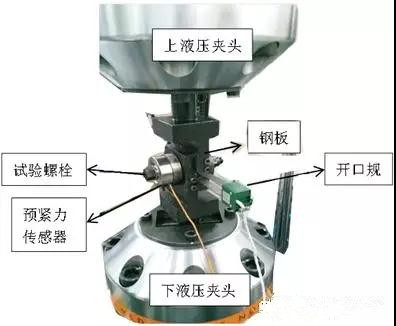
Figure 1 Schematic diagram of the test fixture
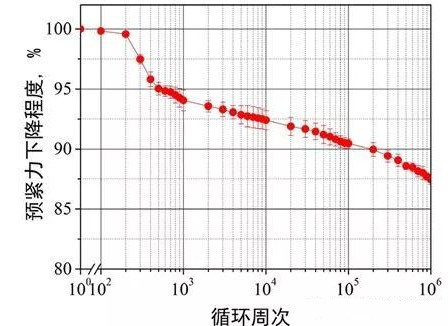
Figure 2 Bolt preload force changes with cycle times
Due to the variety of materials and complicated structure of the screw teeth, when the bolts are subjected to lateral forces, the force of each screw is greatly different. Therefore, the loosening process and the loosening mechanism of bolts of different materials or structures may be different. Only by clarifying the loosening process and mechanism of the bolt structure, it is possible to propose anti-loose measures to ensure the safety and reliability of the bolts.
When the pre-tightening force of the bolt is high, or the applied vibration load is large, the bolt will fatigue fracture. The fatigue fracture of the bolt is related to the microplastic deformation of the screw area, or related to the fretting wear between the screw teeth, or related to the increase of the vibration load after the bolt is loosened. However, there are few related reports at present, and the fatigue failure condition and mechanism of the bolt are still Not sure.
Compared with the "material" fatigue of the bolt, the research difficulty of the "structural" fatigue of the bolt is greatly increased. Cracks can be observed because of the fatigue test conditions of the material, and the crack initiation and propagation of the bolt structure cannot be observed. Only through the combination of finite element simulation and fatigue test, it is possible to optimize the bolt structure and improve the anti-fatigue ability of the bolt. The research team used micro-particle shot peening to treat the brake disc bolt of a certain type of vehicle, as shown in Figure 4. It can be seen that after the shot peening, the surface of the bolt is smooth. The two bolts were tested for lateral loading looseness under high and low preload conditions.
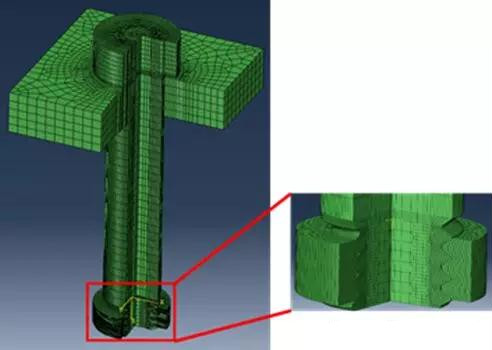
Figure 3 bolt finite element model
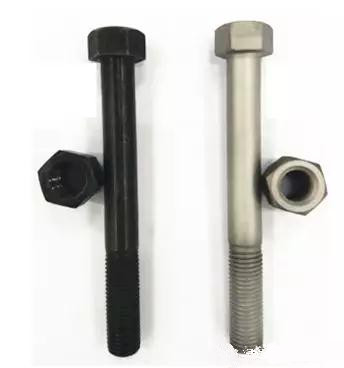
Figure 4 Bolts before and after shot blasting (the right side is the shot peened bolt)
Fig. 5 and Fig. 6 are the curves of the preload force with the cycle time under the two preload conditions. The results show that under the condition of high preload, the shot peening bolt shows more due to the introduction of the residual compressive stress on the surface of the shot peening bolt. Strong anti-fatigue ability; under low pre-tightening conditions, the wear surface of the shot peening bolt thread surface is reduced, showing a stronger anti-loose ability. At present, the micro-particle shot peening process has not been applied to bolts. However, according to the previous research results of the research group, micro-particle shot peening can improve the bolt's resistance to looseness and fatigue resistance, so it has a good application prospect in bolt failure.
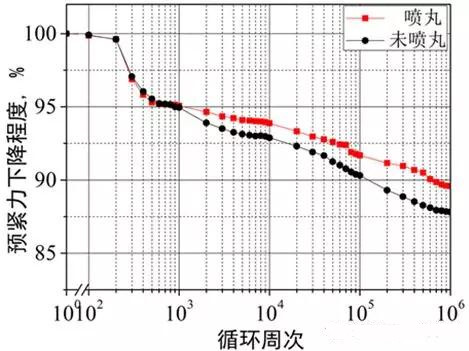
Fig.5 Pre-tightening force curve of shot peening and unshot peening bolt under low preload condition
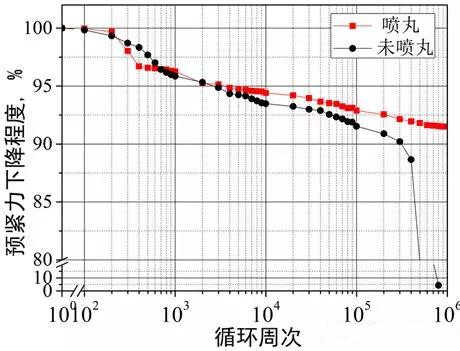
Fig.6 Pre-tightening force curve of shot peening and unshot peening bolt under high preload condition
Solar Mosquito Lamp,Solar Killing Mosquito Light,Solar Mosquito Killing Light,Solar Mosquito Killer Lamp
Yantai LUHAO Lightig CO.,Ltd , https://www.luhaosolar.com
